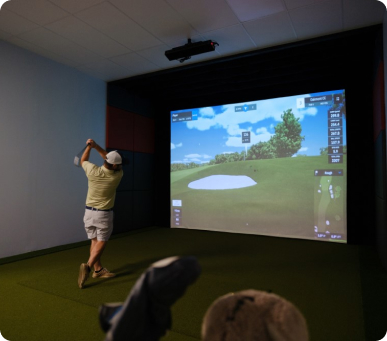How Many Clubs Should I Carry To Play Golf Comfortably?
Twenty-nine clubs are used in modern golf, including Woods, Irons, Wedges, Hybrids, and Putters. However, according to the game’s rules, you can take only 14.
A beginner or a player with little experience has a reasonable question – how many clubs should I carry? There is no simple answer to this question. No one can tell you how many and which clubs you should carry because there are too many variables in the equation. It all depends on your level and style of play, the balance between power and accuracy, and the field you play on. All these things are considered when choosing the number of golf clubs. Generally, there are specific patterns in how golfers make their choices. For many players, this may come down to losing a wedge and adding a fairway wood.
A Few Words About Clubs
- Wood – clubs for initial play and long-distance shots. The number 1 driver is used for the first and hard-hitting from 140 to 300 yards. The second and third numbers are used in a variety of ways.
- Irons: Flat-headed clubs, the main difference is the length of the stick and the strike surface area. They are used for playing on a flat surface where the ball must still roll after hitting. They are marked with numbers from 3 to 9.
- Hybrids – Clubs similar to Woods, but with a mass of Irons. They are used when you need to make an accurate mid-range shot where the common kinds would already be too powerful.
- Pitcher Wedges: These clubs are used to hit the ball through obstacles. A high angle of impact and a low ball roll after landing characterizes them. Sand Wedge is used to getting the ball out of the Bunker. There are also Approach Wedge (also called as Gaps Wedge), and Lob Wedge for different distances.
- Putter – Club for finishing shots into the hole when the ball is already on the Green. But they can also be used next to the Green in areas with low grass.
The Quality of Play Is Not Directly Related To The Number of Clubs
Even if you were allowed to have all 29 clubs in your bag, it would only make sense if you were experienced. It takes years of practice for a player to handle all clubs. In the end, even the most experienced professionals agree that a complete set of clubs is never necessary to play well. At the same time, for each golf course, you must choose the optimum pack you may need during the game on a particular landscape.
The Minimum Required Set of Clubs
Most golfers and coaches now agree that a variation of these clubs would be optimal for most athletes:
- Driver 1
- Wood 3
- Irons 4-9
- Sand Wedge
- Pitching Wedge
- Putter
A set like this gives the player plenty of options to find a way out of tricky situations. The set almost completely covers all possible scenarios on the field.
How to Choose Suitable Clubs?
The question of experience and the so-called handicap of the game is fundamental. Depending on this, you can calculate the cost and durability of the inventory.
Gradation of Handicap:
- High: A newcomer to the game who needs an inventory that will forgive completely inaccurate hits and won’t load into the ground.
- Medium-High: A person who plays occasionally but still has difficulty completing shots and putting the ball on the Green. They need clubs that forgive inaccurate hits.
- Medium: The player already has experience but still makes mistakes. At this stage the golfer already knows his strengths and weaknesses and what clubs he needs.
- Low: A person knows the technique of basic moves such as Fade and Draw and understands when to use which method.
What Are the Possible Club Combinations For The game?
Pitching wedges will be lifted from 45-50°, gap wedges from 50-54°, sand wedges from 54-58°, and lob wedges anywhere from 58-64°.
What Wedges Can I Choose From?
After your 9-iron, you can choose a wedge ranging from 45-64°. Normally, these lofts will be displayed on the heads.
Which Clubs Should Be In A Beginner’s Bag?
A beginner’s bag should include two indispensable clubs. These are Sand Wedge and Pitching. These two clubs cover the need for wedges with the right softness to knock balls out of sand and Bunkers and close the gap between short irons and wedges.
How Many Clubs Do Professional Golfers Use?
Most pro golfers usually use four clubs: Sand Wedge, Lob Wedge, Gap Wedge, and Pitching Wedge. However, each pro has different loft readings of the wedges they are most comfortable playing with.
Is There A Big Difference In Playing With A 50 And 52-degree Wedge?
There is no significant difference between the 50 and 52-degree wedges, but which of these two should be in your bag depends on which pitching wedge you use. Suppose you prefer a 48-degree lofted wedge. In that case, you’d better have the 52-degree club, and if you have decided on the 46-degree iron, then the 50-degree wedge will be the right choice to cover your available gap.
Do I Need A 60-degree Wedge?
A wedge with this degree is used mainly for knocking the ball off the Bunker, and the wedge handles this task perfectly. Still, in general, a 60-degree wedge is a very optional solution. Most players would consider a 56-degree wedge a logical choice, which will help them get out of the Bunker but will be more stable on the Green.






